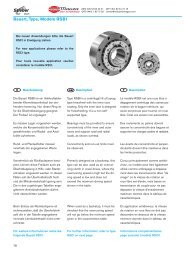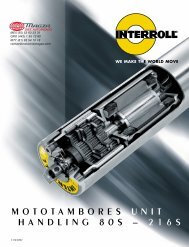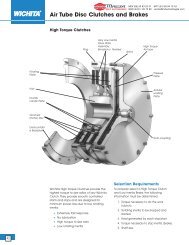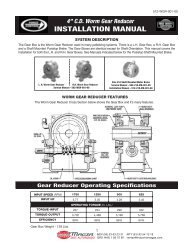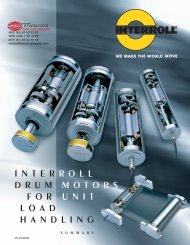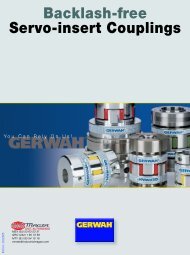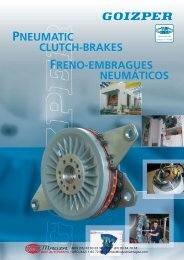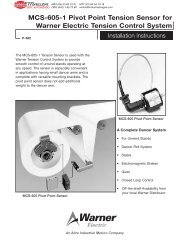Camlok Clamps
Camlok Clamps
Camlok Clamps
- No tags were found...
You also want an ePaper? Increase the reach of your titles
YUMPU automatically turns print PDFs into web optimized ePapers that Google loves.
MINIMUM LOAD CRITERIADIST. AUTORIZADO®MEX (55) 53 63 23 31QRO (442) 1 95 72 60MTY (81) 83 54 10 18ventas@industrialmagza.comThe maximum load imposed on a device determines the structure and size of a plate clamp. The manufacturer will designthe internal components of the clamp to cope with these forces in consideration to the expected mechanical losses of thesystem.DIST. AUTORIZADOMEX (55) 53 63 23 31QRO (442) 1 95 72 60MTY (81) 83 54 10 18ventas@industrialmagza.com®Most <strong>Camlok</strong> clamps use sharp teeth to bite into the plate being lifted. Once a clamp has bitten into the plate, it effectivelybecomes one with the plate and therefore the plate can be safely lifted. The design of the clamp is such that the loadapplied to the hook ring is magnifi ed through a system of links to give a high gripping force to push the jaw teeth into thelifted plate. This gripping force is directly proportional to the load applied and self actuating (i.e. the higher the load applied,the higher the gripping force). This is known as the primary action. A secondary force generated by movement in the liftedplate supplements the primary gripping force, if the plate starts to slip from the clamp, the moving jaw is turned with theplate and the cam shape of the jaw increases the gripping force.Plate lifting clamps are simple machines. Like all machines with mechanisms they are subjected to naturally occurringphenomenon that reduce effi ciency. The phenomenons include;A Friction between moving parts. This will reduce the forces transmitted through the mechanism.B Inertia of the components. This will assert a degree of drag into the system slowing the reaction to changinginputs.The system of links and pivots in a plate clamp are simple, lightweight, and move over a small distance when in operation.The bearings in a plate clamp are generally simple “metal on metal” type, have large forces acting through them, and havepoor lubrication. Therefore, the friction loss can be signifi cant if the clamp is poorly maintained and suffering wear.The mechanism of the plate clamp is not static during operation but the movements are small. The inertia and friction ofthe mechanism can have a signifi cant effect on the performance of the clamp when lifting material from the horizontal tothe vertical position. The imposed load on the clamp fl uctuates from 50% of the load being lifted to zero and then to 100%at the “top dead center” position. (The point when the center of gravity of the plate passes over the pivot point contact onthe fl oor and is then lifted clear.)The amount a tooth penetrates into the lifted plate is dependent on a number of factors:A The gripping forceB The hardness of the plate being lifted.C The shaped of the clamp tooth4In simple terms, a tooth will penetrate into the material until the gripping force divided by the projected area of the toothcontact equals the indent stress of the material.



